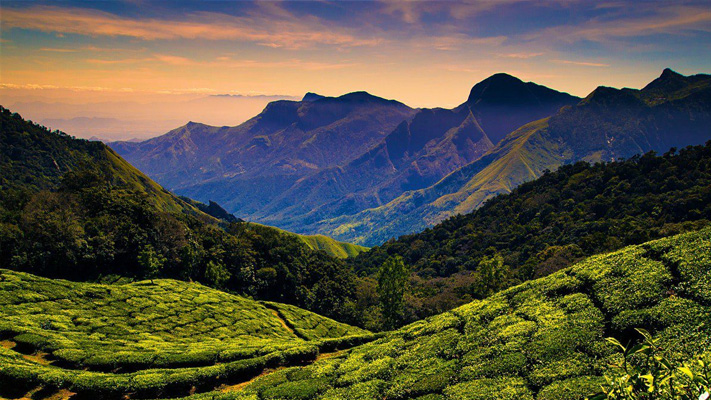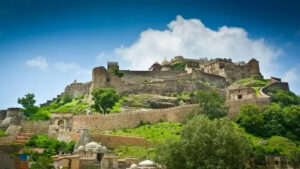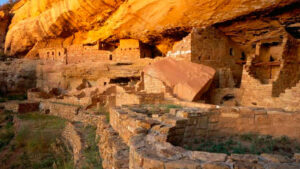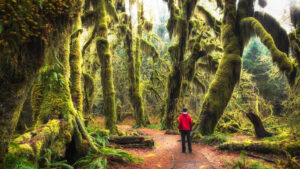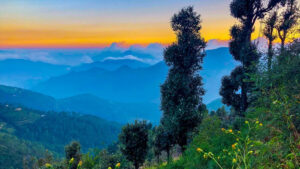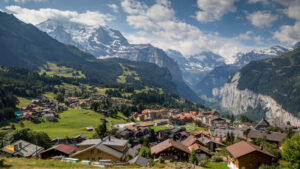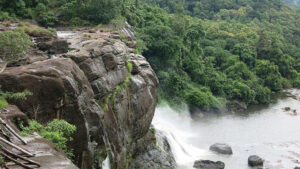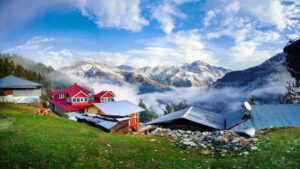NILGIRI HILLS, TAMIL NADU – DISCOVER SERENITY IN THE BLUE MOUNTAINS

Nestled in the Western Ghats of southern India, the Nilgiri Hills form a mesmerizing destination that beckons travelers from far and wide. With its stunning landscapes, pleasant climate, and rich biodiversity, the Nilgiri Hills have earned their place as a coveted tourist destination. The name “Nilgiri” translates to “Blue Mountains,” and true to its name, the region is blessed with scenic hills, rolling tea plantations, dense forests, and cascading waterfalls that paint the landscape in shades of green and blue. The allure of the Nilgiri Hills lies not only in its natural beauty but also in the tranquil hill stations like Ooty, Coonoor, and Kotagiri, which offer a retreat from the hustle and bustle of city life. Travelers are drawn to the region to escape into the lap of nature, embark on adventurous treks, experience the charm of colonial heritage, savor the flavors of Nilgiri tea, and immerse themselves in the refreshing serenity that the hills offer. Whether it’s the scenic train rides, the aromatic tea gardens, the abundance of wildlife, or the rejuvenating climate, the Nilgiri Hills captivate the hearts of visitors and leave an indelible impression, making it a must-visit destination for nature lovers, adventure enthusiasts, and seekers of tranquility.

Nilgiri Hills are a popular destination for nature lovers, adventure enthusiasts, and those seeking tranquility amidst breathtaking landscapes. Here is an overview of the Nilgiri Hills:
- Natural Beauty: The Nilgiri Hills are renowned for their picturesque beauty, featuring lush green valleys, dense forests, cascading waterfalls, and rolling hills covered in mist. The region is blessed with an abundance of flora and fauna, making it a haven for biodiversity. It is also home to several protected areas and national parks, including the famous Mudumalai National Park and the Nilgiri Biosphere Reserve, which is a UNESCO World Heritage Site.
- Ooty: Ooty, short for Ootacamund, is the most popular hill station in the Nilgiri Hills. It attracts tourists from all over the world with its pleasant climate, tea and coffee plantations, charming colonial architecture, and stunning viewpoints. The Nilgiri Mountain Railway, a UNESCO World Heritage Site, connects Ooty with the town of Mettupalayam, offering a scenic train ride through the hills.
- Coonoor: Located at a lower altitude than Ooty, Coonoor is another charming hill station in the Nilgiri Hills. It is known for its tea gardens, trekking trails, and panoramic views of the surrounding hills. The Sim’s Park, a well-maintained botanical garden, is a major attraction in Coonoor, showcasing a wide variety of exotic plants and flowers.
- Wildlife and Nature Reserves: The Nilgiri Hills are a paradise for wildlife enthusiasts. The Mudumalai National Park, Bandipur National Park, and Wayanad Wildlife Sanctuary are home to diverse wildlife species, including elephants, tigers, leopards, deer, and numerous bird species. Jeep safaris and guided nature walks offer opportunities to explore the rich biodiversity and observe wildlife in their natural habitats.
- Tea and Coffee Plantations: The Nilgiri Hills are renowned for their tea and coffee plantations that cover vast stretches of the mountainside. Visitors can take guided tours of these plantations, learn about the tea and coffee-making process, and even indulge in tea and coffee tasting sessions. The scenic beauty of the plantations adds to the charm of the region.
- Trekking and Adventure: The Nilgiri Hills offer several trekking routes that cater to both beginners and experienced trekkers. Trails such as the Doddabetta Peak, Avalanche-Kundha, and Kotagiri-Toddler’s Hill provide breathtaking views of the surrounding landscapes and an opportunity to connect with nature. Other adventure activities like mountain biking, paragliding, and rock climbing can also be enjoyed in the region.
- Tribal Culture: The Nilgiri Hills are home to several indigenous tribal communities, such as the Toda, Kurumba, and Badaga. These tribes have unique customs, traditions, and art forms. Visitors can learn about their way of life, interact with the locals, and experience their cultural heritage.
7 Day Sample Itinerary for a Memorable Vacation
Here’s a suggested 7-day itinerary for exploring the Nilgiri Hills:

Day 1: Arrival in Ooty
- Arrive in Ooty and check into your accommodation.
- Spend the day exploring the town’s attractions, such as the Botanical Gardens and Ooty Lake.
- Enjoy a scenic boat ride on the Ooty Lake and take a leisurely stroll along the lakeside promenade.
- In the evening, visit the local market to shop for souvenirs or sample some local cuisine.
Day 2: Nilgiri Mountain Railway and Tea Gardens
- Start your day early and embark on a memorable ride on the Nilgiri Mountain Railway from Ooty to Coonoor.
- Enjoy the breathtaking views of the surrounding hills, valleys, and tea plantations during the train journey.
- Upon reaching Coonoor, visit the Sim’s Park, a beautiful botanical garden showcasing a variety of plants and flowers.
- Take a tour of a tea estate and learn about the tea-making process while enjoying the serene surroundings of the tea gardens.
Day 3: Doddabetta Peak and Pykara Falls
- Head to Doddabetta Peak, the highest point in the Nilgiri Hills, and soak in the panoramic views of the surrounding landscapes.
- Visit the Tea Museum near Doddabetta and gain insights into the history and production of tea in the region.
- In the afternoon, make your way to Pykara Falls, a mesmerizing waterfall surrounded by lush greenery.
- Enjoy the natural beauty and capture some memorable photographs of the cascading falls.
Day 4: Mudumalai National Park and Wildlife Safari
- Embark on a day trip to Mudumalai National Park, located near the Nilgiri Hills.
- Take a thrilling wildlife safari in the park, where you may spot elephants, tigers, deer, langurs, and various bird species.
- Enjoy the picturesque landscapes and immerse yourself in the rich biodiversity of the region.
- Return to Ooty in the evening and relax at your accommodation.

Day 5: Coonoor Exploration and Tea Tasting
- Spend the day exploring Coonoor in more depth.
- Visit attractions like Dolphin’s Nose and Lamb’s Rock for panoramic views of the valleys and tea plantations.
- Explore the hidden treasures of Coonoor by taking a leisurely walk through the tea gardens and enjoying the serenity of the surroundings.
- Engage in a tea tasting session to savor the flavors of the renowned Nilgiri tea.
Day 6: Avalanche Lake and Emerald Lake
- Visit Avalanche Lake, located about 28 kilometers from Ooty.
- Take a scenic drive or trek to the lake and enjoy the tranquility of the surroundings.
- Engage in activities like boating, fishing, or simply relax amidst the serene natural beauty.
- Later, make your way to Emerald Lake, another picturesque spot surrounded by tea plantations and forests.
- Enjoy a leisurely walk around the lake or have a picnic amidst the breathtaking landscapes.
Day 7: Kotagiri Exploration and Departure
- On your last day, visit Kotagiri, a lesser-known gem in the Nilgiri Hills.
- Explore the beautiful Catherine Falls and Elk Falls, located in the vicinity of Kotagiri.
- Take a leisurely walk through the tea estates, soak in the peaceful atmosphere, and capture the scenic beauty.
- In the evening, bid farewell to the Nilgiri Hills and depart for your onward journey.
Note: This itinerary is flexible and can be adjusted based on your preferences and the time you have available.
Best Time to Visit
The best time to visit the Nilgiri Hills, including destinations like Ooty, Coonoor, and Kotagiri, is during the months of March to June and September to November. Here’s a breakdown of the seasons and their characteristics:

- Summer (March to June): This is the peak tourist season in the Nilgiri Hills. The weather during this time is pleasant with temperatures ranging from 15°C to 25°C (59°F to 77°F) in most parts. It is an ideal time for outdoor activities, sightseeing, and enjoying the scenic landscapes. However, it can get crowded, especially in April and May.
- Monsoon (July to September): The Nilgiri Hills receive moderate to heavy rainfall during the monsoon season. The region is enveloped in lush greenery, and the waterfalls are at their best. While the rainfall adds a charm to the hills, it can also lead to occasional landslides and disruptions in outdoor activities. If you don’t mind the rain and prefer a quieter atmosphere, this can be a good time to visit.
- Post-Monsoon/Early Winter (October to November): After the monsoon, the hills are refreshed, and the weather becomes cool and pleasant. The landscapes are vibrant, and it is a great time for nature walks, trekking, and exploring the tea gardens. The tourist crowds are relatively low during this period.
It’s important to note that the Nilgiri Hills have a relatively mild and enjoyable climate throughout the year. However, the winter months (December to February) can get chilly, with temperatures dropping to as low as 5°C (41°F). If you enjoy colder weather and want to experience misty mornings and cozy evenings, winter can be a good time to visit, but do pack warm clothing.



